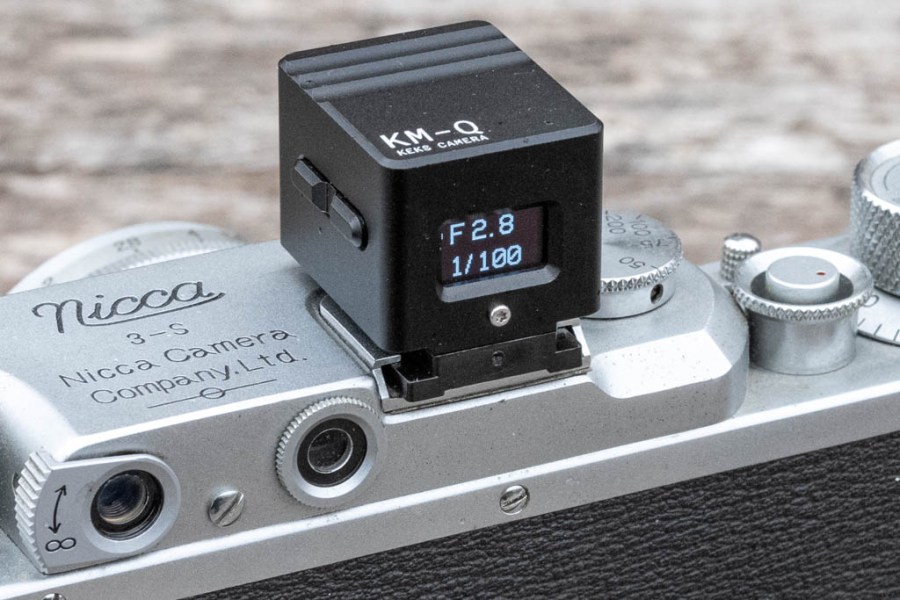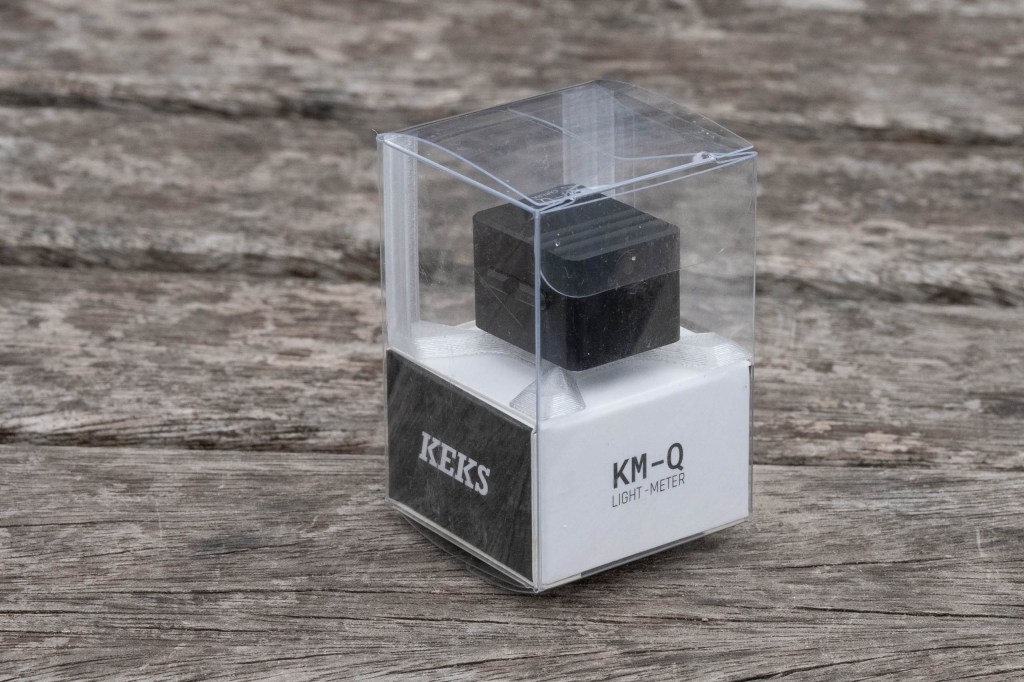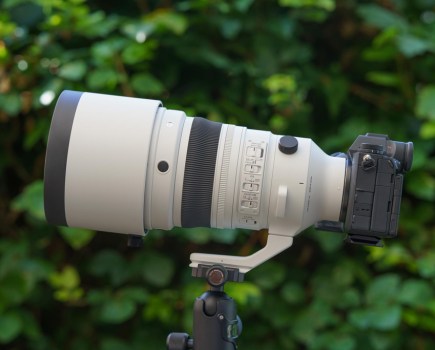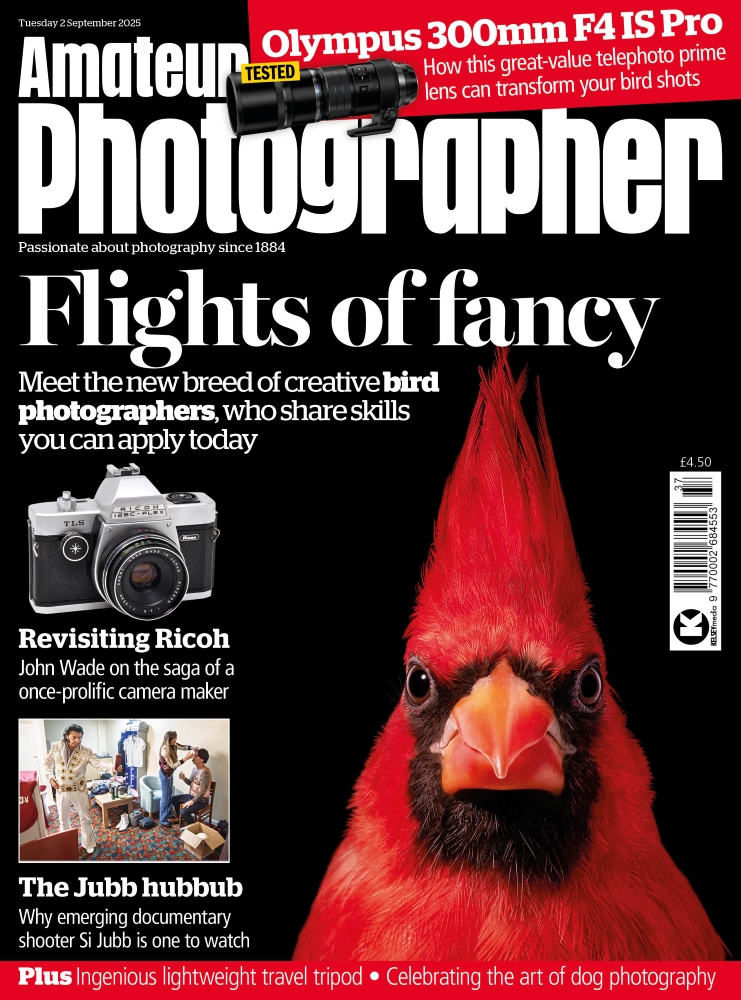Amateur Photographer verdict
The KEKS KM-Q is a fantastic little light meter for photographers who like to use vintage film cameras. It’s well made, attractively priced, and gives accurate readings.- Tiny size and weight
- Good battery life
- Simple to use
- Clear OLED display
- Unmarked buttons
- Only basic reflective metering available
If you love shooting with old film cameras, you’re probably all too aware of the idiosyncrasies surrounding their light meters. Many cameras from the 1960s and 1970s require long-banned mercury batteries and give inaccurate results with modern replacements. Others have selenium light meters that deteriorate unpredictably with age. So there’s a lot to be said for having a compact hot-shoe light meter, and nothing I’ve seen comes anywhere close to as being as portable as the tiny KEKS KM-Q.
KEKS KM-Q at a glance:
- $85 / £80
- Hot-shoe light meter
- Shutter or aperture priority metering
- OLED display
- Built-in battery
- Available in black or silver
- kekscameras.com
Indeed this meter is so small that it could be mistaken for a hot-shoe viewfinder. It’s pretty much just a metal cube measuring about an inch (2.5cm) each way, and it weighs next to nothing. So there’s no excuse for not popping it into your camera bag.
The design is inevitably very simple, with the metering cell on the front and two unmarked buttons on each side. Readings are displayed on a tiny OLED panel, which on mine is on the back. But there are also versions with the readout on top, or with an inverted rear display for use with Rollei 35 cameras.
KEKS KM-Q key features:
- Tiny size: This device measures 21 x 25.5 x 22mm and weighs only 18.5g
- OLED display: Versions are available with the display either at the back or on top
- Built-in battery: An internal rechargeable battery promises 20 hours use and is topped up via USB-C
- Shoe mounts: Three shoe mounts are provided, with different widths to match the shoes on different cameras
KEKS says the meter is sensitive to a light over a 30° angle of view, which is roughly similar to the vertical angle of view of a 50mm lens on full frame. It’s for measuring reflected light only – unlike most hand-held meters, there’s no incident light option. So it’s an uncomplicated piece of kit that’s best suited to use with fixed-lens cameras.
Those unmarked buttons mean that you’ll need to read the manual first to understand how the control scheme works. Pressing the rear-left button turns the meter on; once it’s woken up, another tap of this button temporarily locks the reading. There’s no power-off command; the meter goes to sleep again after a minute’s inactivity.
Tapping the front-left button switches between shutter and aperture priority metering modes, with the two right-side buttons setting your desired shutter speed or aperture. Then to set your film speed, hold down the front-left button and adjust the ISO using the right-hand buttons. It’s all pretty easy once you’ve got the hang of it.
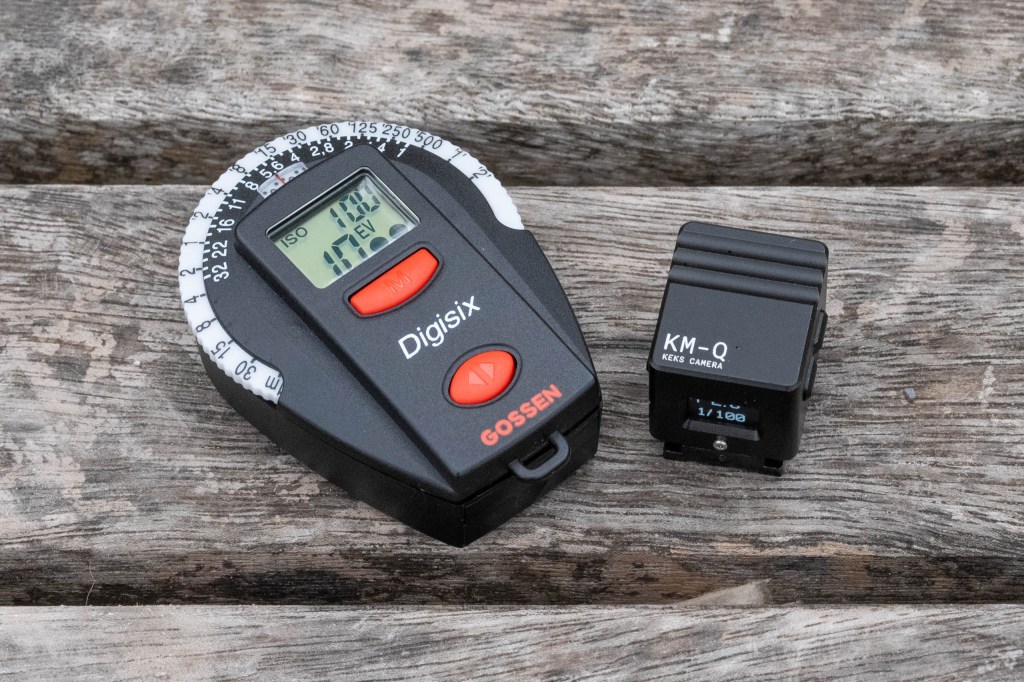
Most importantly, the meter gives reliably accurate readings. In side-by-side tests, it matched my calibrated spotmeter almost exactly. It’s plenty good enough for negative film, but you might prefer something more sophisticated if you want to dabble in shooting slides.
The next step up
KEKS also makes the larger KM02, which provides additional features and controls for £139. It gives a choice of three display modes and includes an exposure compensation feature.
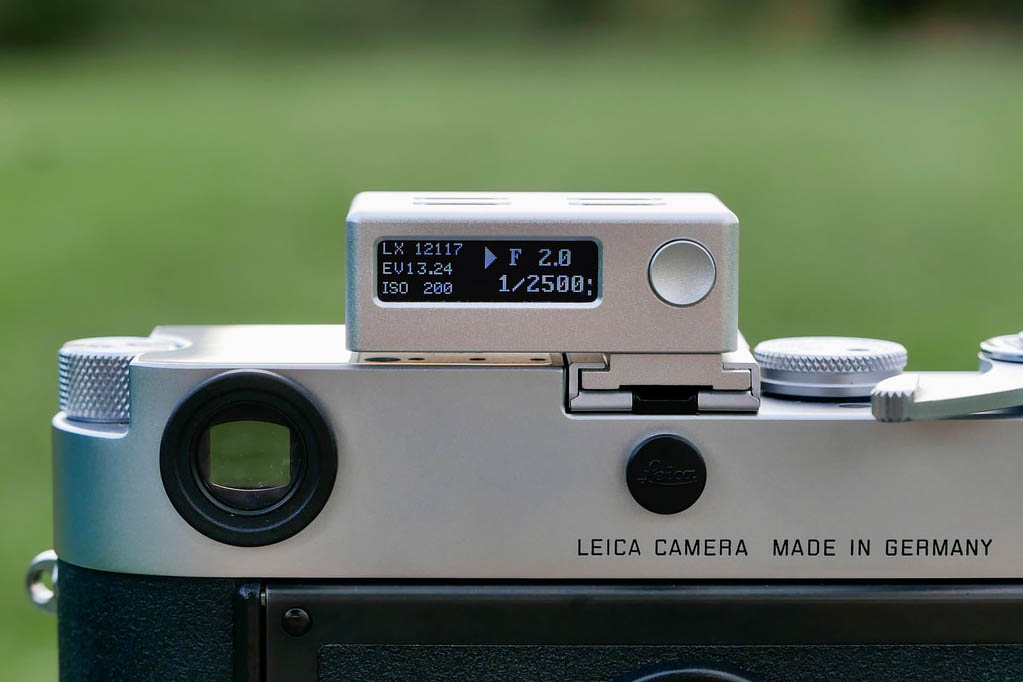
You can even tailor the selectable shutter speed, aperture and ISO ranges, and then save these setups for three different cameras.
KEKS KM-Q: Our Verdict
Overall, the KEKS KM-Q is a fantastic little light meter at an attractive price. It’s robustly built, easy to use, and gives accurate measurements.

Follow AP on Facebook, Twitter, Instagram, YouTube and TikTok.

